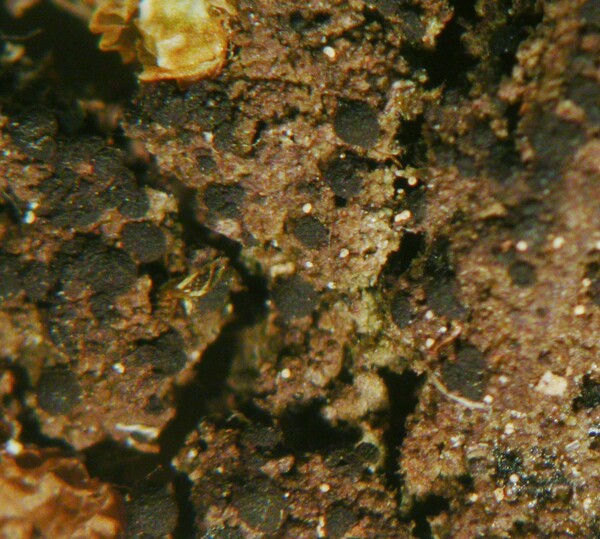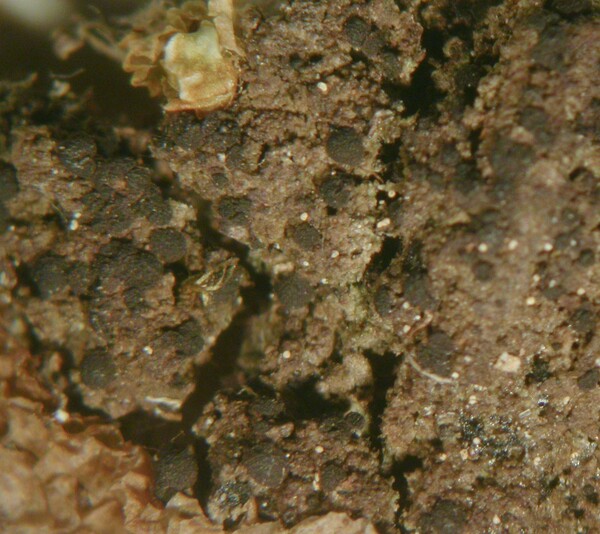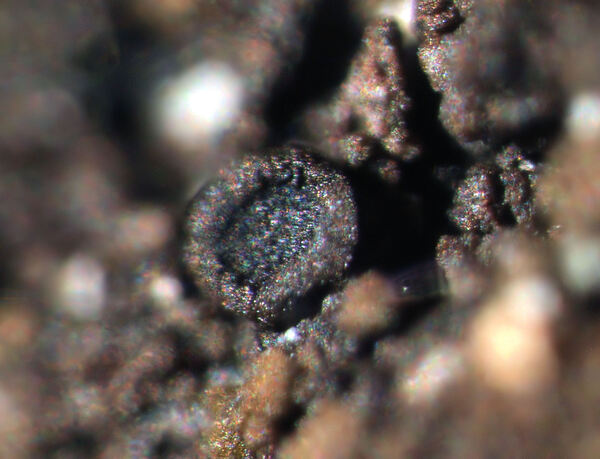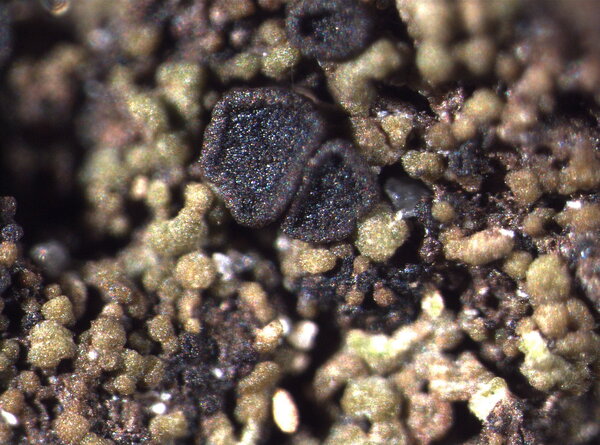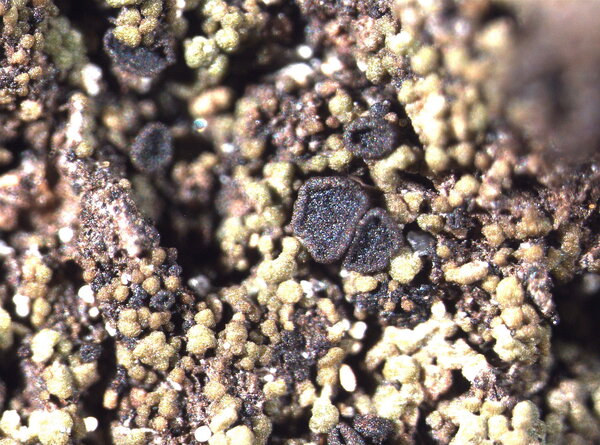Placynthiella hyporhoda (Th. Fr.) Coppins & P. James
Lichenologist, 16: 244, 1984. Basionym: Lecidea hyporhoda Th. Fr. - Lichenogr. Scand., 1, 2: 456 1874.
Synonyms: Saccomorpha hyporhoda (Th. Fr.) Clauzade & Cl. Roux
Distribution: N - TAA (Nascimbene & al. 2008, 2022, Nimis & al. 2015).
Description: Thallus crustose, episubstratic, dark olive brown to almost black, subgelatinous when wet, consisting of coalescing, c. 0.1 mm wide goniocysts forming a continuous to cracked-areolate crust. Apothecia biatorine, black (also when wet), sessile and constricted at base, 0.2-0.5 mm across, with an epruinose, concave to weakly convex disc and a initially prominent and incurved, finally often excluded proper margin. Proper exciple 20-35 µm wide laterally, dark brown to brown-black, pseudoparenchymatous; epithecium brownish, K-; hymenium 50-75 µm high, pale brown in upper part, deep red-brown in lower part; paraphyses sparingly branched and anastomosing, 0.5-1 µm thick at base, the apical cells 1-4 µm wide, with a dark cap; hypothecium dark brown, K+ purple-violet. Asci 8-spored, cylindrical-clavate, thin-walled, the apical dome mostly I-, Trapelia-type. Ascospores 1-celled, hyaline, ellipsoid, 9-12 x 4-6 µm. Photobiont chlorococcoid. Spot tests: thallus K-, P-, C-, KC-, UV-. Chemistry: a terpenoid and an unidentified substance. Note: on soil rich in heavy metals in upland areas; probably more widespread in the Alps, but overlooked.
Growth form: Crustose
Substrata: soil, terricolous mosses, and plant debris
Photobiont: green algae other than Trentepohlia
Reproductive strategy: mainly asexual, by isidia, or isidia-like structures (e.g. schizidia)
Pioneer species
Commonnes-rarity: (info)
Alpine belt: rare
Subalpine belt: rare
Oromediterranean belt: absent
Montane belt: very rare
Submediterranean belt: absent
Padanian area: absent
Humid submediterranean belt: absent
Humid mediterranean belt: absent
Dry mediterranean belt: absent
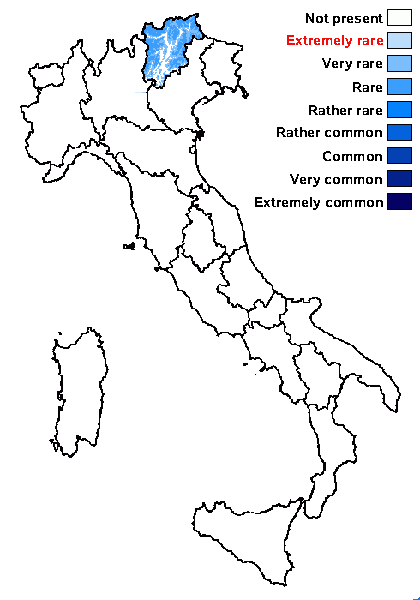
Predictive model
Herbarium samples
Growth form: Crustose
Substrata: soil, terricolous mosses, and plant debris
Photobiont: green algae other than Trentepohlia
Reproductive strategy: mainly asexual, by isidia, or isidia-like structures (e.g. schizidia)
Pioneer species
Commonnes-rarity: (info)
Alpine belt: rare
Subalpine belt: rare
Oromediterranean belt: absent
Montane belt: very rare
Submediterranean belt: absent
Padanian area: absent
Humid submediterranean belt: absent
Humid mediterranean belt: absent
Dry mediterranean belt: absent

Predictive model
| Herbarium samples |
 INDEX FUNGORUM
INDEX FUNGORUM
 GBIF
GBIF
 DOLICHENS
DOLICHENS
